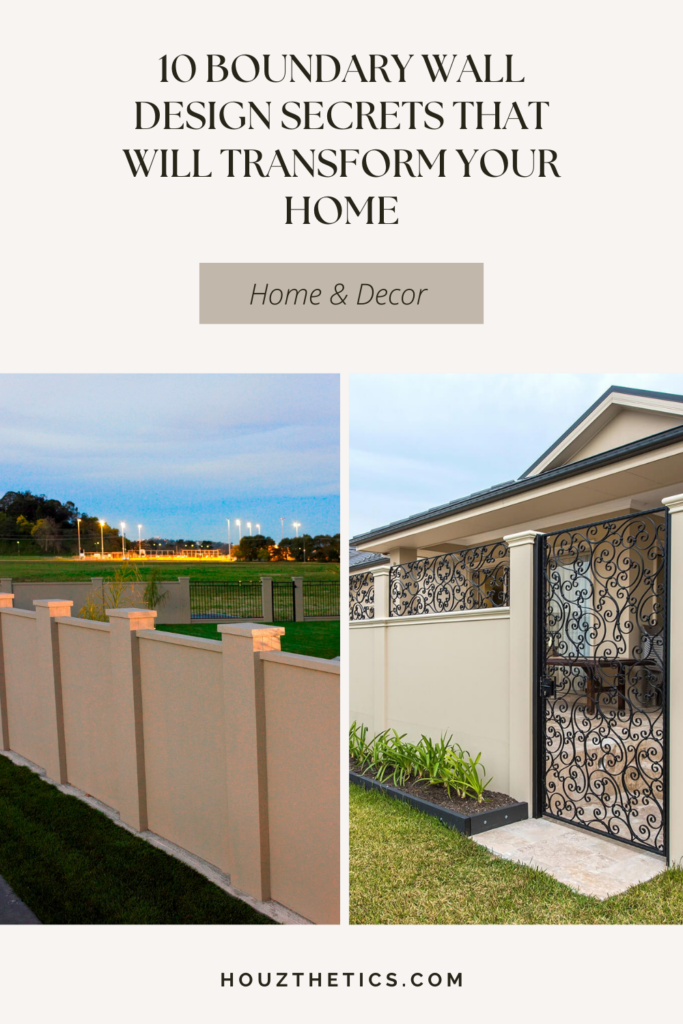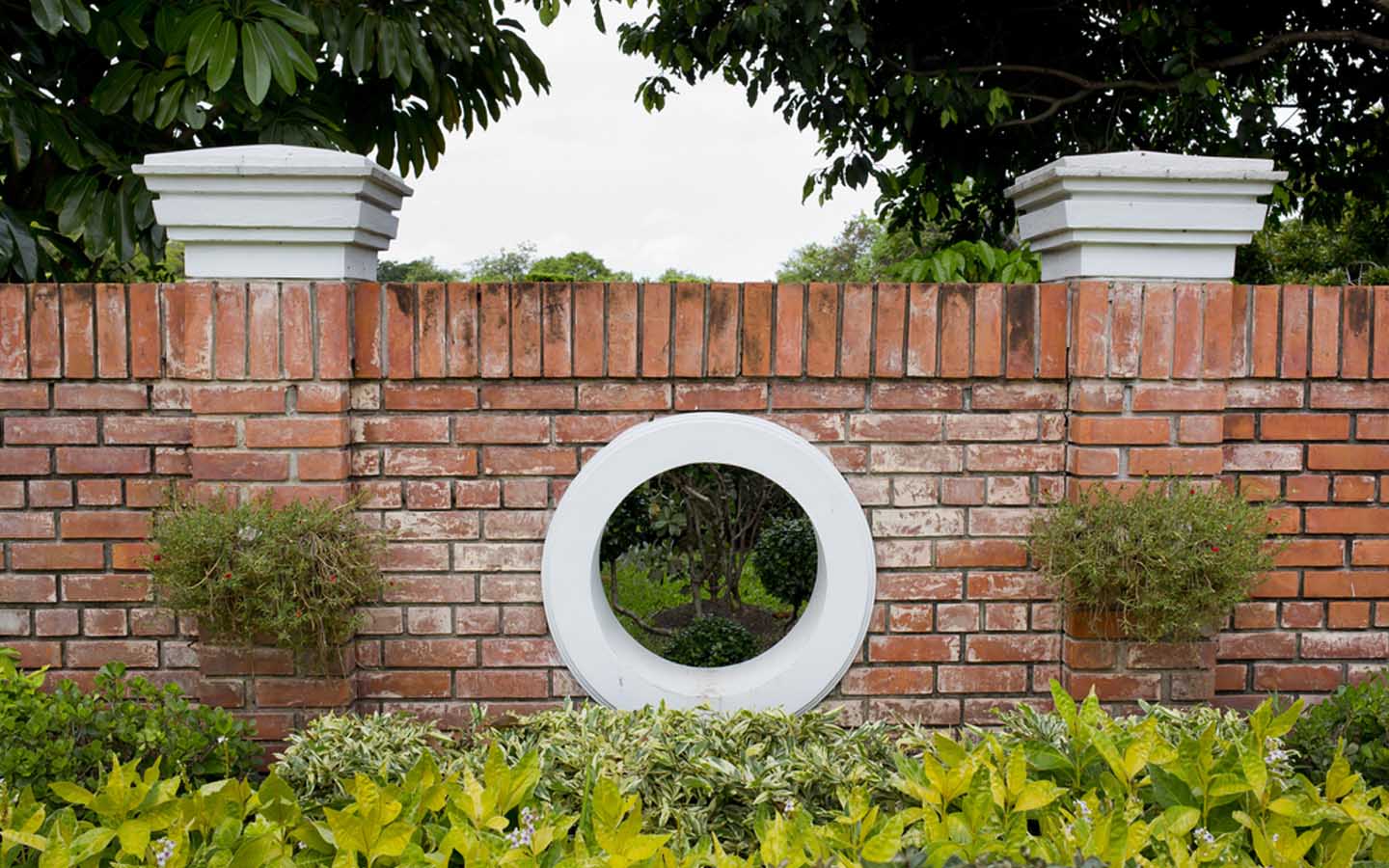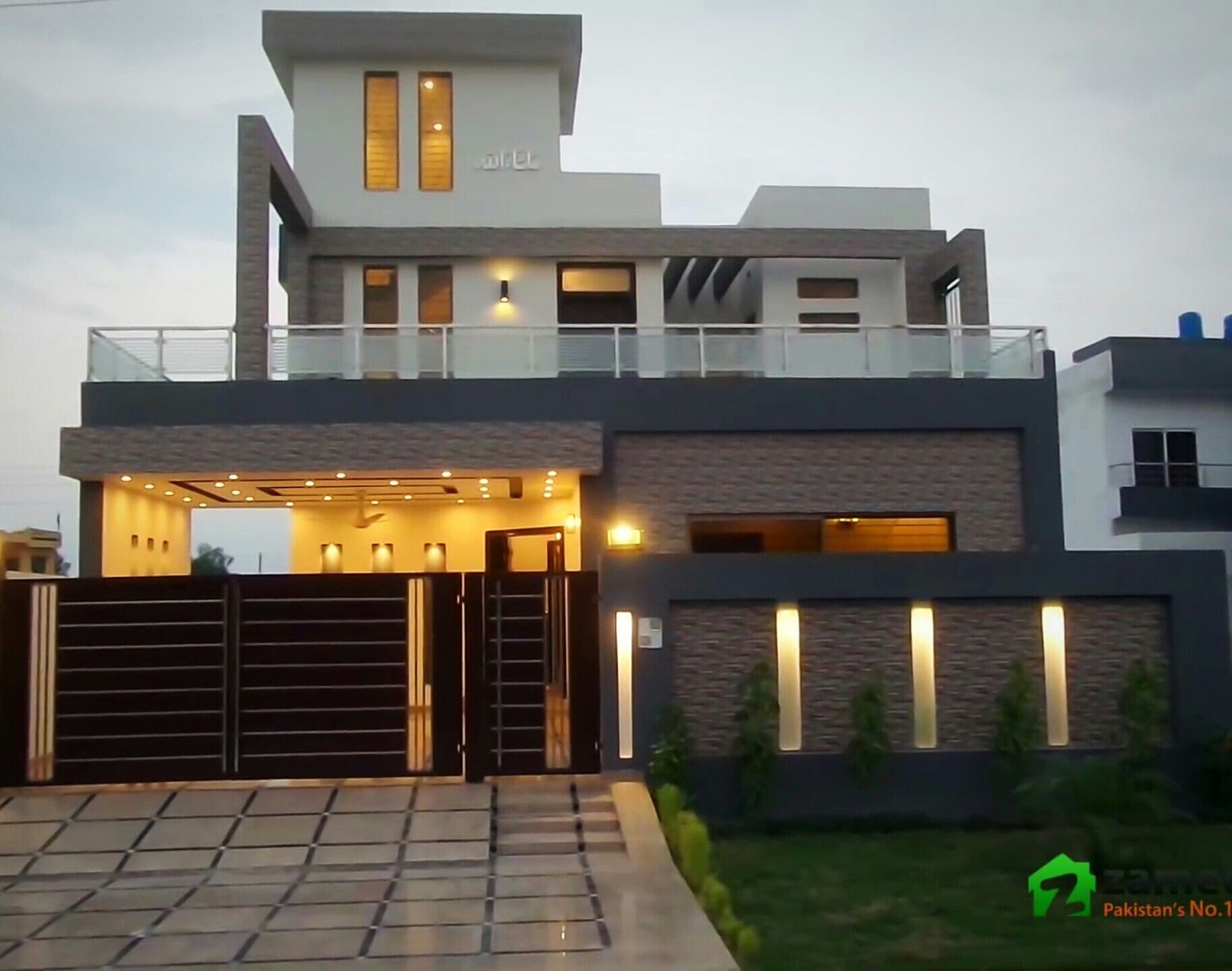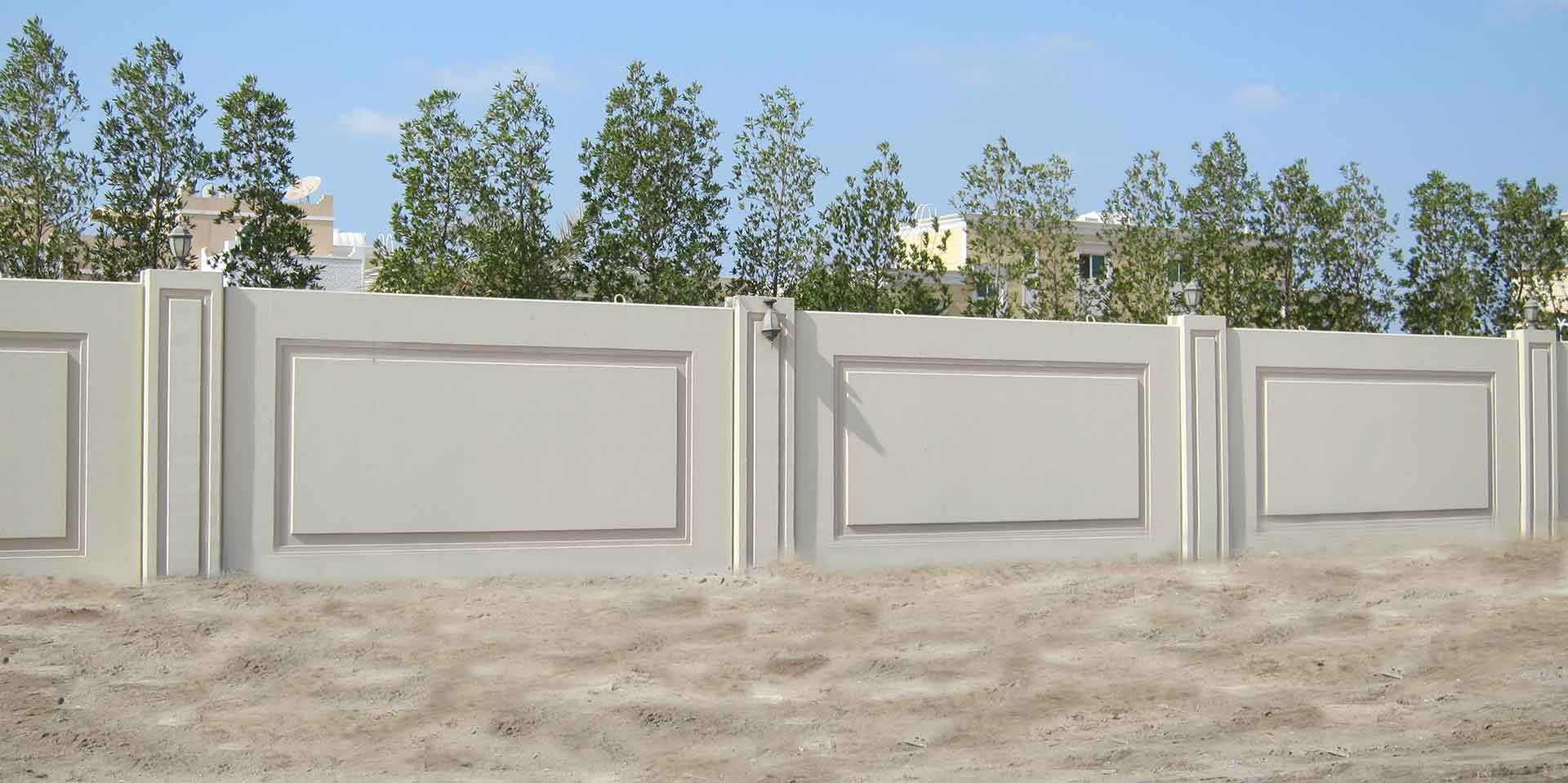
Boundary wall design refers to the architectural and engineering considerations involved in the planning, construction, and maintenance of boundary walls. Boundary walls serve multiple purposes, including defining property lines, enhancing security, providing privacy, and improving the aesthetic appeal of a property.
The design of boundary walls involves various factors, such as the choice of materials, height, style, and ornamentation. Common materials used for boundary walls include brick, stone, concrete, and wood. The height of the wall is determined by factors such as security concerns, privacy requirements, and local building codes. The style and ornamentation of the wall can complement the architectural style of the property and enhance its aesthetic appeal.
Boundary walls play a crucial role in enhancing security by deterring unauthorized access to a property. They can also provide privacy by shielding the property from the view of outsiders. Additionally, boundary walls can contribute to the overall aesthetic appeal of a property, serving as a decorative element and complementing the architectural style of the building.
Boundary Wall Design
Boundary wall design encompasses a range of essential aspects that contribute to the functionality, security, and aesthetic appeal of a property. These key aspects, explored through the lens of the keyword’s part of speech (noun), include:
- Materials: Brick, stone, concrete, wood
- Height: Determined by security, privacy, and building codes
- Style: Complements architectural style of the property
- Ornamentation: Enhances aesthetic appeal
- Security: Deters unauthorized access
- Privacy: Shields property from outside view
- Aesthetics: Contributes to overall visual appeal
- Functionality: Defines property lines, provides support
These aspects are interconnected and influence the overall design of boundary walls. For instance, the choice of materials affects the wall’s durability, security, and aesthetic appeal. The height of the wall must balance security concerns with privacy requirements and local regulations. The style and ornamentation of the wall should complement the architectural style of the property, enhancing its overall visual appeal.

Materials
The choice of materials for boundary wall design is crucial as it impacts the wall’s durability, security, and aesthetic appeal. Brick, stone, concrete, and wood are commonly used materials, each with its unique characteristics and advantages.
Bricks are a popular choice for boundary walls due to their durability, strength, and low maintenance requirements. They are available in a variety of colors and textures, allowing for customization to complement the architectural style of the property. Stone walls offer a classic and elegant look, providing excellent durability and security. However, they can be more expensive than other materials.
Concrete walls are known for their strength, durability, and versatility. They can be molded into various shapes and designs, making them suitable for both traditional and contemporary architectural styles. Wood walls, while not as durable as other materials, provide a warm and inviting look. They are often used in combination with other materials, such as brick or stone, to create a unique and visually appealing boundary wall.
Ultimately, the choice of materials for boundary wall design depends on factors such as security needs, privacy requirements, architectural style, and budget. By carefully considering these factors and selecting appropriate materials, homeowners can create boundary walls that are both functional and aesthetically pleasing.

Height
The height of a boundary wall is a crucial aspect of its design, determined by a careful balance of security, privacy, and adherence to local building codes. Understanding the interplay between these factors is essential for creating effective and aesthetically pleasing boundary walls.
- Security: The height of a boundary wall significantly influences its ability to deter unauthorized access and protect the property from intruders. Taller walls provide a greater level of security, making it more difficult for potential trespassers to climb over or breach the wall.
- Privacy: Boundary walls also serve as privacy screens, shielding the property from the view of outsiders. The height of the wall determines the level of privacy achieved. Higher walls offer greater seclusion, blocking the line of sight from neighboring properties or public areas.
- Building codes: Local building codes often impose height restrictions on boundary walls to ensure safety and maintain aesthetic harmony within the neighborhood. These codes may specify maximum allowable heights or require specific setbacks from property lines.
Striking the right balance among these factors is crucial for effective boundary wall design. By considering security needs, privacy requirements, and local regulations, homeowners can create boundary walls that meet their functional and aesthetic objectives while complying with established guidelines.

Style
The style of a boundary wall plays a crucial role in enhancing the overall aesthetic appeal of a property. By complementing the architectural style of the property, the boundary wall seamlessly integrates with the existing structures and surroundings, creating a cohesive and visually pleasing environment.
When designing a boundary wall, architects and homeowners carefully consider the architectural style of the property to ensure harmony and continuity. For instance, a traditional-style house with intricate brickwork and decorative elements would be well-complemented by a boundary wall made of stone or brick, featuring similar detailing and craftsmanship.
In contemporary architectural styles, where clean lines and minimalist aesthetics prevail, boundary walls often adopt a sleek and modern look. They may be constructed using materials such as concrete or metal, with minimalist designs that emphasize functionality and geometric forms. By mirroring the sharp angles and unadorned surfaces of the property, the boundary wall reinforces the overall architectural concept.
The style of the boundary wall also influences the choice of materials and ornamentation. For classic architectural styles, traditional materials such as stone or brick are often preferred, as they evoke a sense of history and grandeur. In contrast, contemporary styles may incorporate innovative materials like glass or metal, creating a striking and modern aesthetic.
Understanding the connection between the style of the boundary wall and the architectural style of the property is essential for creating a visually cohesive and aesthetically pleasing outdoor space. By carefully considering this aspect during the design process, homeowners can ensure that their boundary wall complements the existing structures and enhances the overall curb appeal of their property.

Ornamentation
Ornamentation plays a significant role in boundary wall design, enhancing the aesthetic appeal of properties and contributing to their overall visual impact. By incorporating decorative elements and details into the design of boundary walls, homeowners and architects can create unique and visually stunning outdoor spaces that reflect their personal style and complement the architectural style of the property.
- Architectural Harmony: Ornamentation allows boundary walls to seamlessly integrate with the architectural style of the property. Decorative elements, such as cornices, moldings, and finials, can be incorporated into the design to complement the architectural features of the house or other structures on the property, creating a cohesive and visually pleasing outdoor space.
- Enhanced Curb Appeal: Ornate boundary walls can significantly enhance the curb appeal of a property. Intricate designs, decorative details, and the use of visually appealing materials can elevate the overall aesthetic of the property, making it more attractive and inviting.
- Personal Expression: Ornamentation provides an opportunity for homeowners to express their personal style and preferences. By incorporating unique decorative elements, homeowners can create boundary walls that reflect theirality and create a truly customized outdoor space.
- Historical and Cultural Significance: In some cases, ornamentation on boundary walls can have historical or cultural significance. Decorative elements may be inspired by traditional architectural styles or local craftsmanship, adding a sense of place and heritage to the property.
By carefully considering the use of ornamentation in boundary wall design, homeowners and architects can create visually captivating outdoor spaces that enhance the overall aesthetic appeal of the property. Whether it’s through the incorporation of intricate patterns, the use of decorative materials, or the integration of traditional elements, ornamentation plays a crucial role in elevating the visual impact of boundary walls.

Security
In the realm of boundary wall design, security stands as a paramount consideration, directly influencing the effectiveness of the wall in deterring unauthorized access and protecting the property it encloses. A well-designed boundary wall acts as a physical barrier, creating a sense of security and safeguarding the premises against potential intruders.
The height of the wall plays a crucial role in enhancing security. Taller walls pose a greater challenge for trespassers to scale or breach, acting as a deterrent against unauthorized entry. Additionally, the choice of materials for the wall’s construction is significant. Materials like concrete, stone, and brick offer superior strength and durability, making it more difficult for intruders to break through.
Furthermore, boundary walls often incorporate security features such as barbed wire, spikes, or broken glass shards along the top, creating an additional layer of protection. These elements serve as physical deterrents, discouraging potential intruders from attempting to climb over the wall.
The presence of security lighting around the boundary wall is another important factor. Illuminating the perimeter with bright lights can deter intruders by reducing their ability to approach the property unnoticed. Motion-activated lights can also be used to alert homeowners or security personnel to any suspicious activity near the boundary wall.
Understanding the connection between security and boundary wall design is essential for creating effective and secure outdoor spaces. By incorporating security considerations into the design process, homeowners and architects can create boundary walls that effectively deter unauthorized access and safeguard the property within.

Privacy
In the realm of boundary wall design, the concept of privacy holds paramount importance, as it directly impacts the ability of the wall to shield the property from the intrusive gaze of outsiders. A well-designed boundary wall acts as a protective barrier, ensuring the seclusion and tranquility of the property’s occupants.
- Visual Barrier: Boundary walls serve as physical barriers that obstruct the line of sight from the outside world, creating a private and secluded outdoor space. This visual barrier prevents unwanted observation and allows occupants to enjoy their property without feeling exposed.
- Acoustic Insulation: Boundary walls made of certain materials, such as concrete or brick, provide excellent acoustic insulation. This helps to mitigate noise pollution from outside sources, creating a peaceful and serene environment within the property.
- Sense of Security: Privacy and security are closely intertwined. A boundary wall that effectively shields the property from outside view can contribute to a sense of security and safety for the occupants, reducing anxiety and promoting peace of mind.
- Aesthetic Considerations: While privacy is a primary concern, boundary walls can also enhance the aesthetic appeal of the property. By incorporating decorative elements or landscaping around the wall, homeowners can create a visually pleasing and inviting outdoor space that complements the architectural style of the house.
The connection between privacy and boundary wall design is undeniable. By understanding the multifaceted role of boundary walls in safeguarding privacy, architects and homeowners can create effective and aesthetically pleasing designs that meet the specific needs and preferences of the occupants.

Aesthetics
In the realm of boundary wall design, aesthetics plays a pivotal role in enhancing the overall visual appeal of a property. Boundary walls are not merely physical barriers but also architectural elements that contribute to the aesthetic character of the built environment.
- Architectural Harmony: Boundary walls should complement the architectural style of the property. A traditional-style house, for instance, might feature a boundary wall made of stone or brick, harmonizing with the overall aesthetic of the structure.
- Materials and Finishes: The choice of materials and finishes for the boundary wall can significantly impact its visual appeal. Natural materials like stone or wood can lend a rustic charm, while modern materials like concrete or metal can create a sleek and contemporary look.
- Ornamentation and Details: Ornamental details, such as decorative moldings, cornices, or carvings, can enhance the aesthetic appeal of boundary walls. These elements add visual interest and create a sense of architectural richness.
- Landscaping and Greenery: Integrating landscaping and greenery around the boundary wall can further enhance its visual appeal. Plants, shrubs, and trees can soften the appearance of the wall, creating a more inviting and natural aesthetic.
By considering the aesthetic dimension of boundary wall design, architects and homeowners can create outdoor spaces that are both functional and visually pleasing. Boundary walls can become integral elements of the property’s overall design, contributing to its architectural character and enhancing its curb appeal.

Functionality
In the context of boundary wall design, functionality encompasses the practical aspects of the wall, ensuring it fulfills its intended purpose of defining property lines and providing structural support.
- Property Demarcation: Boundary walls serve as physical markers, clearly delineating the boundaries of a property. They prevent encroachment and disputes by establishing
- Structural Support: Boundary walls often provide structural support to other elements of the property, such as gates, fences, and even buildings. They act as , retaining soil and preventing erosion, especially on sloped terrain.
- Stability and Durability: Well-constructed boundary walls enhance the overall stability and durability of the property. They resist weathering, physical impact, and other environmental factors, ensuring longevity and protecting the enclosed area from external threats.
- Acoustic Insulation: Boundary walls made of certain materials, such as concrete or brick, can provide acoustic insulation, reducing noise pollution from outside sources and creating a more peaceful environment within the property.
The functionality of boundary walls is inextricably linked to their design. By considering factors such as material selection, structural integrity, and intended use, architects and homeowners can create boundary walls that effectively define property lines, provide necessary support, and contribute to the overall functionality and safety of the property.

Frequently Asked Questions about Boundary Wall Design
This section addresses common queries and misconceptions surrounding boundary wall design, providing informative answers to guide homeowners and architects in making informed decisions.
Question 1: What factors should be considered when choosing materials for a boundary wall?
When selecting materials for a boundary wall, several factors must be taken into account, including durability, security needs, aesthetic preferences, and local building codes. The choice of materials should align with the intended purpose and overall design of the wall.
Question 2: How does the height of a boundary wall impact its functionality?
The height of a boundary wall is crucial in determining its effectiveness in providing security, privacy, and noise reduction. Taller walls offer enhanced security and privacy but may require additional structural support and adherence to local building regulations.
Question 3: Can boundary walls be designed to complement the architectural style of a property?
Yes, boundary walls can be designed to complement the architectural style of a property. The choice of materials, ornamentation, and overall design should harmonize with the existing structures to create a cohesive and visually appealing outdoor space.
Question 4: What is the role of ornamentation in boundary wall design?
Ornamentation can enhance the aesthetic appeal of boundary walls, adding visual interest and reflecting personal style. Decorative elements should be incorporated thoughtfully to complement the overall design and avoid overwhelming the wall’s functionality.
Question 5: How do boundary walls contribute to the overall security of a property?
Boundary walls serve as physical barriers, deterring unauthorized access and protecting the property from intruders. They can be designed with security features such as increased height, anti-climb measures, and security lighting.
Question 6: What are the key considerations for ensuring the privacy of a property through boundary wall design?
To ensure privacy, boundary walls should be designed with sufficient height and opacity to block the line of sight from outside. Landscaping and strategic placement of plants can further enhance privacy and create a secluded outdoor space.
Understanding these factors and incorporating them into boundary wall design can help create functional, secure, and aesthetically pleasing outdoor spaces that meet specific needs and preferences.
Conclusion
Boundary wall design encompasses a multifaceted approach to creating functional, secure, and aesthetically pleasing outdoor spaces. By considering factors such as materials, height, ornamentation, and landscaping, architects and homeowners can design boundary walls that meet specific security, privacy, and aesthetic needs.
Understanding the importance of boundary wall design not only enhances the visual appeal of a property but also contributes to the overall safety and well-being of its occupants. Boundary walls serve as physical barriers, deterring unauthorized access, safeguarding privacy, and providing a sense of security. They can also enhance the architectural character of a property, complementing the existing structures and creating a harmonious outdoor environment.
